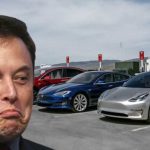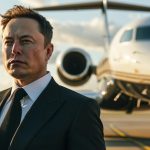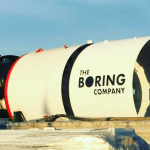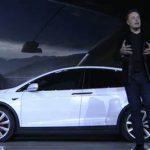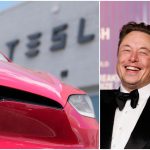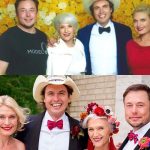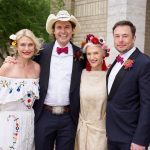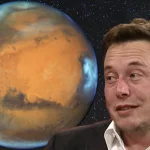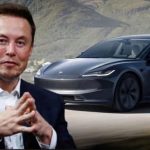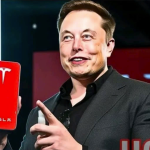Elon Musk’s Approach to Risk-Taking and Innovation
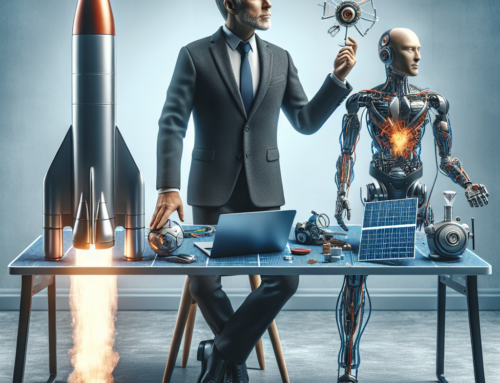
Elon Musk’s Approach to Risk-Taking and Innovation 🎲🚀
Elon Musk isn’t just an entrepreneur—he’s a high-stakes gambler who wagers everything on a future most can’t even imagine. From pouring personal fortunes into near-failing ventures to pushing technology beyond its breaking point, Musk’s approach to risk-taking and innovation has rewritten the rules of industries like space exploration, automotive manufacturing, and renewable energy. As of March 31, 2025, his audacity, resilience, and knack for turning “impossible” into reality continue to captivate the world. On X, fans dub him a visionary genius, while critics decry his chaotic ambition—yet no one can deny the seismic shifts he’s unleashed. How does he do it? Let’s break down the pillars of Musk’s strategy and explore what makes him tick.
All-In Mentality: Betting the Farm 💰
Musk doesn’t play it safe—he dives in with everything he’s got. His risk appetite isn’t just bold; it’s borderline mythic. Consider SpaceX: founded in 2002 with a $100 million chunk of his $180 million PayPal windfall, the company started with no rockets, no track record, and a dream to colonize Mars. By 2008, after three consecutive Falcon 1 launch failures, SpaceX teetered on the brink of collapse—Musk himself admitted on X in a reflective 2025 post that he was “weeks from bankruptcy.” With his fortune nearly gone, he scraped together every last dollar for a fourth attempt. It flew, securing a NASA contract that turned SpaceX into a $350 billion behemoth by 2025.
Tesla’s story is just as harrowing. In 2008, amid the global financial crisis, Tesla faced ruin—production stalled, cash evaporated. Musk injected $70 million of his own money, living off personal loans to keep it alive. A decade later, in 2018’s “production hell” for the Model 3, he slept on the factory floor, micromanaging assembly lines to meet demand. By 2025, Tesla’s pumping out 1.8 million cars annually, a testament to his refusal to fold. X posts from early this year quote him saying, “I’d rather go broke than give up”—a mantra he’s lived out, briefly hitting zero before clawing back to billionaire status.
This all-in mentality isn’t reckless gambling—it’s a calculated bet on world-changing rewards. Musk risks personal ruin not for ego, but because he believes the payoff—whether interplanetary travel or sustainable transport—can redefine humanity’s future. It’s a high-wire act that’s paid off spectacularly, proving that fortune favors the fearless when the stakes are sky-high.
Embracing Failure: Flops as Fuel 💥
For Musk, failure isn’t a defeat—it’s a stepping stone. He’s turned flops into fuel, learning from each crash to refine his next move. SpaceX’s early days were a masterclass in this. The Falcon 1’s three failures between 2006 and 2008—explosions that torched millions—didn’t deter him. Instead, each blast provided critical data: engine flaws, structural weaknesses, launch dynamics. By 2025, SpaceX’s reusable Falcon 9 boosters land with balletic precision, a feat born from those fiery lessons. Starship, the Mars-bound behemoth, followed suit—repeated test explosions in 2020-2024 paved the way for its first orbital success in late 2025, a milestone cheered wildly on X.
Tesla’s stumbles tell a similar tale. The Model 3’s 2017 rollout was a logistical nightmare—delays and defects pushed Musk to the edge. Yet, that “hell” birthed the gigafactory model, scaling production to millions by 2025. Musk’s philosophy, often echoed in his X posts this year—“Fail fast, learn faster”—encapsulates his mindset. Failure isn’t chaos to him; it’s raw data. Critics on X call it sloppy; fans hail it as “genius grit.” Either way, Musk’s track record shows that embracing setbacks as teachers, not dead ends, is a cornerstone of his innovation engine.
First Principles: Rethinking the Game 🔧
Musk’s breakthroughs stem from a relentless adherence to “first principles”—stripping problems to their core physics and rebuilding solutions from scratch, unburdened by convention. At SpaceX, he questioned why rockets cost $1,000 per pound to orbit. Industry norms relied on disposable designs; Musk asked, “What if they’re reusable?” By 2025, SpaceX’s Falcon 9 hauls payloads for $200 per pound, slashing costs and upending aerospace economics. Tesla followed suit: why tether cars to gasoline and dealerships? Musk made EVs sleek, software-driven, and direct-to-consumer—by 2025, Tesla’s Full Self-Driving (FSD) tech is rewriting automotive rules.
The Boring Company took this further. Traffic clogging cities? Traditional fixes like highways were slow and costly. Musk dug tunnels instead, designing Prufrock machines to bore faster and cheaper. The Vegas Loop, expanded in 2025, ferries thousands daily—a modest but growing proof of concept. On X this March, Musk explained, “Start with physics, not precedent.” This mindset lets him sidestep “that’s how it’s always been” traps, birthing innovations that others couldn’t fathom.
Pushing Limits: Beyond Comfort Zones 🚀
Musk thrives where others balk, pushing tech and ambition past sane limits. The Hyperloop, unveiled in 2013, proposed 700 mph travel in vacuum tubes—a wild idea he open-sourced, igniting a global race. By 2025, startups like HyperloopTT are testing prototypes, crediting Musk’s spark. Neuralink, launched in 2016, aims to fuse human brains with AI via implants. Early 2024 trials on humans stirred ethical debates—too invasive, too risky—but Musk sees it as humanity’s edge against superintelligent AI. X posts this year buzz with awe: “Brain chips in 2025? Insane—but classic Musk.”
Starship’s saga epitomizes this. Designed to haul 150 tons to Mars, it blew up repeatedly in tests from 2020 to 2024. Undeterred, Musk kept launching—2025’s orbital triumph, streamed live on X, marked a leap toward his Martian dream. Users marvel, “He’s insane—in a good way.” It’s risk as rocket fuel: Musk doesn’t just step outside comfort zones—he obliterates them, betting that the impossible today is tomorrow’s norm.

Industry Shifts: Ripple Effects 🌊
Musk’s gambles don’t just succeed—they reshape entire sectors. SpaceX’s $350 billion valuation and 6,000+ Starlink satellites by 2025 forced NASA, Boeing, and Lockheed to slash costs and rethink strategies—private spaceflight is now a competitive arena. Tesla’s $1 trillion empire dragged Ford, GM, and Volkswagen into the EV race; its FSD AI, refined by 2025, is pushing autonomous driving mainstream. SolarCity, merged into Tesla Energy, mainstreamed solar storage with Powerwall—by this year, it powers millions of homes, nudging utilities toward renewables.
Even policy feels his pull. In 2025, Musk’s advisory role to President Trump, speculated on X, hints at influence on tech and infrastructure agendas. Posts cheer his “disrupt-or-die” ethos, crediting him with accelerating progress others stalled on. His risks don’t just win—they rewrite the playbook for everyone else.
The Cost: Chaos and Critics ⚠️
Big bets come with big downsides. Musk’s relentless pace burns out staff—Tesla’s churn rate is notorious, and SpaceX’s grueling schedules exhaust even the devoted. His X rants, like 2018’s “funding secured” blunder, cost Tesla $20 million in SEC fines and dented trust. Timelines slip—Hyperloop remains a prototype, FSD isn’t fully autonomous by 2025 despite promises. Skeptics on X grumble, “Overpromised, underdelivered,” pointing to Neuralink’s slow rollout or The Boring Company’s modest scope.
Personally, Musk pays too—100-hour weeks, strained relationships, and public scrutiny take a toll. Yet, he shrugs it off, tweeting in March 2025, “Chaos is the price of progress.” To him, setbacks are fleeting; the vision is eternal. Critics may howl, but his wins drown out the noise.
Genius at the Edge 🌠
Elon Musk’s risk-taking and innovation are two sides of the same coin. He bets big, flops hard, learns fast, and wins bigger—SpaceX’s Mars trajectory, Tesla’s EV dominance, and Neuralink’s brain-chip frontier prove it. On X in 2025, fans crown him “the ultimate disruptor”; detractors call him “a reckless dreamer.” The truth lies in the overlap: Musk is both, wielding risk like a chisel to sculpt industries into his vision. His approach—all-in stakes, failure as fuel, first-principles logic, limit-pushing grit—has turned sci-fi into reality.
What’s his next bold stroke? Starship’s Mars landing looms, Neuralink’s human trials deepen, and whispers on X hint at a 2025 energy grid overhaul via Tesla. Love him or loathe him, Musk’s gamble on the future keeps the world watching—and waiting. 🚀

